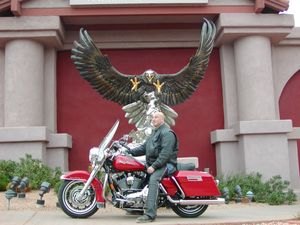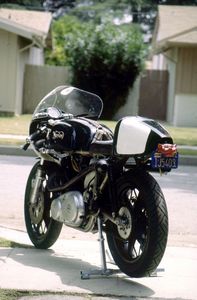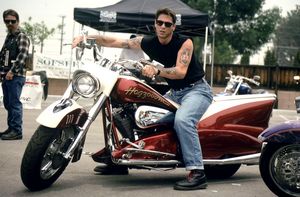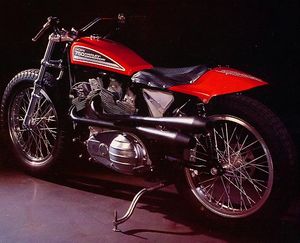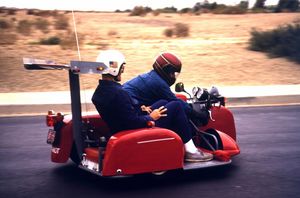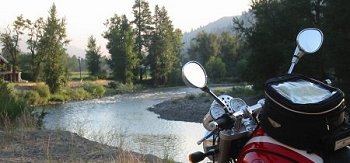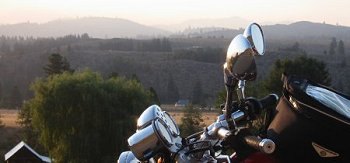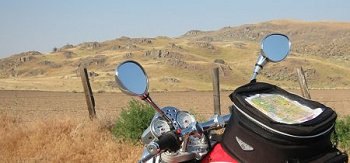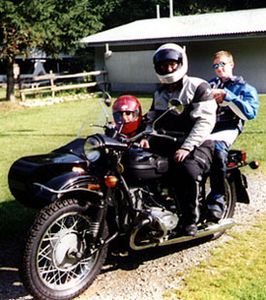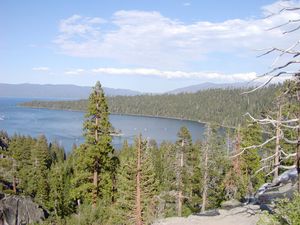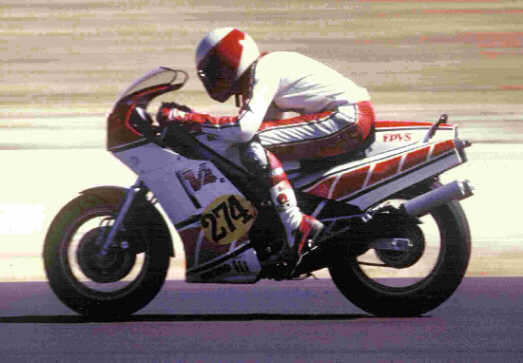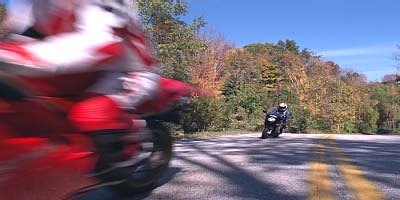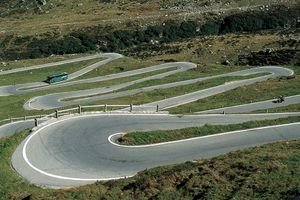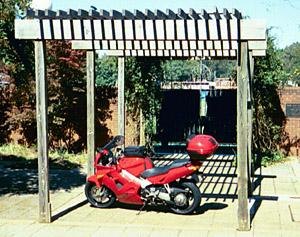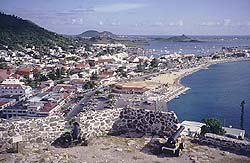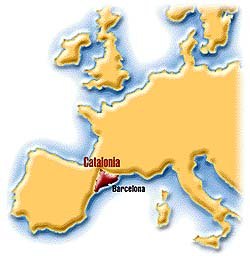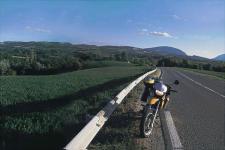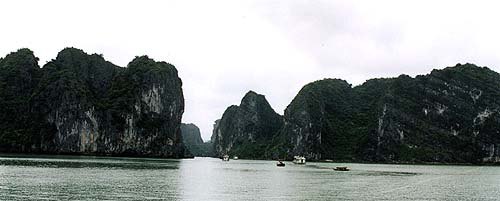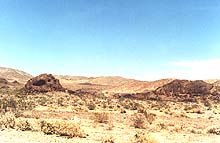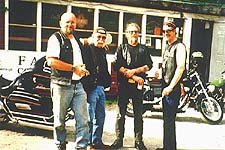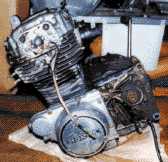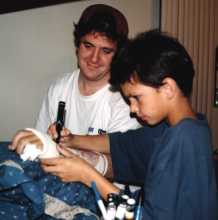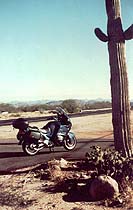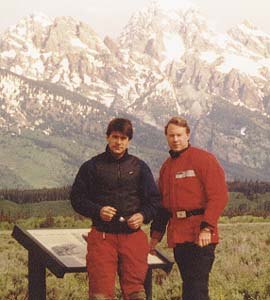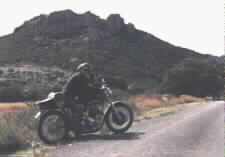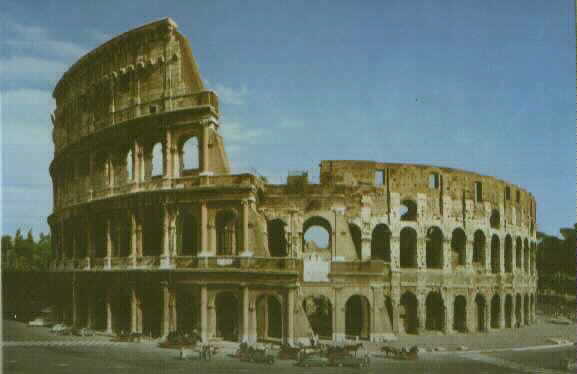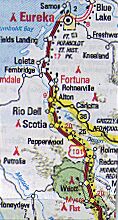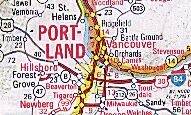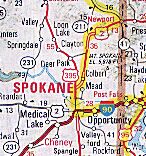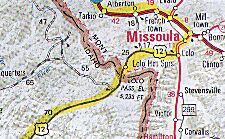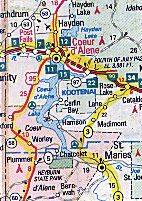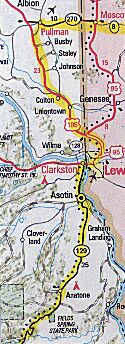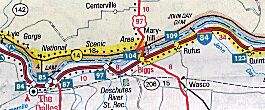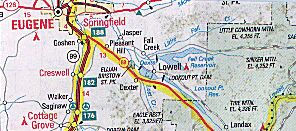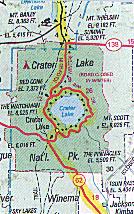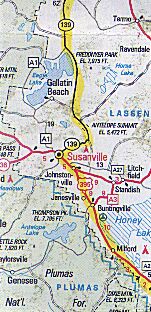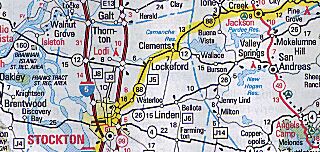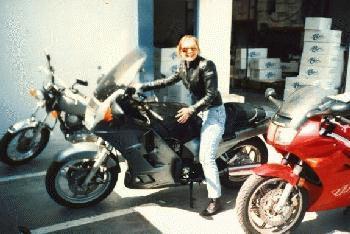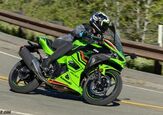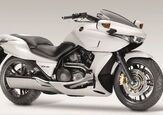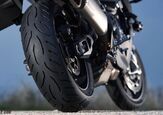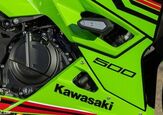One Lung Monsters
Since they first burbled, barked and sputtered upon the scene in 1894, the world has seen the rise and more often the fall of more than 2500 different makes of motorcycles produced by more than 30 countries in about every form imaginable. A hundred years ago when backyard mechanics were strapping motors to bicycle frames, one-lung monsters gained center stage until the advent of multi-cylinder designs supplanted their star billing. Yet, the singles carried on, finding their own loyal band of adherents, owners who both rode them on the street and flogged them on the tracks. In fact, it was not uncommon for riders owning twin cylinder bikes to plug up one jug and enter single competitions because of the "fun factor."
A Fistful of Gnarly Nortons
Call me biased to the breed and forget the Prince of Darkness jokes since, at last count, I've owned and ridden seven Nortons including several 750cc and 850cc Commandos including two Fastbacks as well an Atlas café racer and the semi-vaunted John Player Replica (with a George Gjonovich 810 kit no less). As to when it was, that the single and vertical twins were first referred to as "Snortin' Nortons," that date is long lost in the mists of Brit Bike History. However, even the non-Britophile responds to the sound of these magic Norton words: Manx, Commando and Dominator. Beyond the stock machines, themselves legends, lies the land of custom "café racer" Nortons. Bikes that are fitted with aftermarket and sometimes even homegrown parts that make their own statement yet are punctuated with a common heritage of excellent handling, stout performance and the looks to match.
Bikes From the Freakin' Fringe
All sizes, shapes and dispositions and all caught on film! From a 24-inch knucklehead with a $15,000 price tag, to a Corvette LT-1 powered 12-footer built in a garage, to an "unsafe-at-any-speed" Porsche 911 BMW, to the grandfather of the Segway, and more... we got'em right here.
The Flying Red Chair
An aircraft inspector by profession, he also enjoyed fabricating alternate winged means of alternate transportation. Several years ago the Phoenix, Arizona resident managed to build a Cessna 150 in his backyard from spare parts, and then took on another lower to the ground project, this one-of-a kind sidecar.
MO on Tour : Okanogan Co. : Part One
Armed with my shipping documents I wait my turn for the next available forklift operator. One finally arrives. After handing over my papers he disappears into the bowels of the warehouse. Returning minutes later with a large metal container with the words "FRONT OF MOTORCYCLE >>" displayed boldly on each side.
Three Up On The Parkway
We headed north from Atlanta. Between Atlanta and the northern border of Georgia are some superb motorcycling roads. U.S. Highway 19 going north from Dahlonega is a good example. Though it is a broad highway, with most sections having a climbing lane, it has plenty of curves that can challenge your skill. There are also a few decreasing radius curves, so I encourage first-timers on the road to take it a little easy. This is especially true on a Ural, since the strange, hypnotic effect the rig has on elderly drivers makes them all want to swerve over into your lane for a good look. (My god, Mildred, say, what? Why I think I saw one of those when serving with Monty at El Alamein.) Another thing about traveling on a Ural is that it makes everybody smile. So at most food or gas stops somebody will come over and ask about it. Even at scenic turnouts, you're liable to get one or two curious souls. And you will stop fairly frequently. When hauling three people and luggage up mountain grades, the engine tends to overheat.
Catching the Nine-Sixteen
Of course, I was forced to watch as every rider in the area with a bike was out on the road where they damn well belonged, tails wagging furiously like puppies in a petting zoo as my own mood darkened. I prayed for rain. Nuclear war became thinkable. Marilyn Manson started to sound like the best band of the 20th century.
Yossef And The Dolomites: MORons in the Mountains
I was in the Dolomites, the wild mountainous range that stretches between Italy and Austria, at the tail end of a long European tour, days away from flying back home. I was dying to sample the ultra high passes that were lying ahead, but the rain, the cold and my constantly misting visor convinced me that it was best not to finish this fine 2000 mile trip at the bottom of a sheer 1000 ft. drop. I meekly turned around back to the safety of the highway while promising myself that I would come back here sometime. Two years pass slowly, in the meantime I find myself living in Milan, Munich's INTERMOT show is in the cards and there's a ST2 Ducati that's in need of some road testing. Last chance to check if these passes are indeed Europe's finest free roller coasters before the looming winter.
Island Chopping
Danielle and I came to the Caribbean with family and friends and stayed on the British Virgin Island of Anguilla. Our story begins when Danielle and I chose to take a side trip and elected to check out nearby St. Martin, 150 miles east of Puerto Rico. Initially, I imagined traveling around the island inside one of the ubiquitous private/public commuter vans among the locals. Boring? You bet. Sure, our range of possibilities would be limited, but it would be simple and cheap. However, I am always on the lookout for a good adventure and riding in passenger vans doesn't qualify as an adventure.
Motorcycling the Mediterranean
Founded in the ninth century by the Franks as Marca Hispancia, Catalonia's history, culture and architecture have since been influenced by several societies, including Roman and Greek. Such a diverse and lengthy background has created a unique population, as well as a fascinating variety of architectual styles. Even more enjoyable is the huge assortment of culinary dishes. Most villages proudly offer forth meals native to their region. Delicious local specialties like Conill amb allioli (rabbit with a Catalonian sauce) in Catalonia's interior, or Arrrs a banda (black rice with cuttlefish) on the coast, make the trip worthwhile on their own.
Alps Tour
Europe, July 20, 2001 -- Some years ago, Michelin ran an extremely effective advertising campaign in British biking magazines. In the ads there was a large black & white photograph depicting a beautiful snaking alpine road. At the bottom of the picture, and against any advertising common sense, a small rider and bike could be seen leaning into one the road's corners. The copy of the ad was genial and smug: "Between Aosta and Montblanc lay some of the world's most breathtaking roads. Probably."
Good Morning Vietnam
But isn't the Unabomber in jail? Yeah, he is. But what about someone close to the Unabomber, like maybe a relative? No, his brother was the one who informed the police after the Washington Post published his rambling manifesto. Comrades? No, he lived alone in a log cabin and he doesn't seem even to mind solitary confinement.
The Great Escape, or: Hey, Weren't Those the Rocky Mountains?
"Temperatures are expected to top out over 100 degrees (38C) today," drawls an unenthusiastic voice on the radio. "There's an overturned tractor-trailer downtown and a four-car pile up on the Hollywood Freeway has traffic at a stand-still all over LA."
Feel The Heat!
What compelled me to make such a journey, I am not sure. Perhaps it was my tour, just weeks before, through the Monterey Peninsula. Having already traveled through the most beautiful part of California, I may have had some subconscious curiosity to see the Golden State's most hideous and inhospitable landscape. Maybe I was seeking my own brief glimpse of what Chris Scott encountered during his Saharan tours. Of course, I'm not naive enough to believe that a day trip through the paved roads of Death Valley could compare to Scott's adventurous treks into the African desert, but perhaps the chance to get a brief taste of what he experienced motivated me to pursue my own trek.
Mother's Roadhouse
"Everyone is welcome, naturally, but the majority of the crowd here is a biker crowd," she says proudly. "I've spent my whole life in the tavern business!"
Paradise, Not: Crashing Hell
But I just gaped at him, glazed, a dozen questions hazily buzzing in my head, and all I could manage was a weak, stupid, "What … ?", while steadying my broken left hand with my right, looking like a fool and feeling like an idiot at the same time.
And The Weather Gods Smiled
We arrived at MO's secret headquarters by mid-morning, but had very little time for chit-chat. Threatening clouds loomed overhead, so we hurried through Editor Plummer's pre-flight briefing and prepared for our journey home. The R1100RT was beautifully finished in metallic blue, and made a fine first impression. Included with the bike was a BMW Kalahari riding suit with matching BMW-by-Widder electric vest. I replaced my traditional leather jacket and pants, sweater and snowmobile suit in favor of BMW's suit, although it was disconcerting to exchange gear that's known to do the job for untried equipment. In any case, I refused to give up my trusty DryRider rainsuit, in spite of the high-tech BMW suit's watertightness claims.
The Great Adventure
Together they survived yawning Midwest potholes, gnarly weather, wayward cattle drives, a high speed chase against a police helicopter, and most of all, each other. Based in North Carolina, Kevin normally is a systems administrator with AT&T and Dave is an elephant and rhino keeper for the North Carolina Zoological Society. But on occasion their wives flee as they transform into rabid motorcyclists.
Kevin and Dave's Great Adventure
Part One: Rim Shots
By Kevin Hawkins,
Contributing Writer
June 6, 1997, Greensboro, NC
Putting It All In Order
Virtual Tour: Rome, Italy
Hello, world. Are you ready for an exciting virtual trip to Roma, Italy? Yes, that's right, a tour of one of the most wonderful cities in existence. Of course we won't simply tell you about the beautiful sites -- and there are thousands of them -- we'll let you have a look around Roma from a motorcyclist's perspective.
Beth Dixon: Day Sixteen
After filling the gas tank and a quick breakfast, I left Cloverdale on Highway 101 headed south. I wanted to stop at the Korbel champagne cellars in Guerneyville on the way home. I thought a bottle of brut would be a great way to end my vacation. I had plenty of time for a little side trip. Cloverdale to Sunnyvale is only about 150 miles.
Beth Dixon: Day Fifteen
I got up when my alarm went off. Amazing. I caught up on my trip journal while eating breakfast. Godfrey paged me, so I called him back. All was about the same at home. John was doing well. Randy Davis was coming into town some time today, moving up to the San Jose area from San Diego. I'd left a key to my place with Godfrey for Randy, in case he needed a place to crash for a while.
Beth Dixon: Day Fourteen
I slept late; didn't wake up until almost 9:00am. Rob had planned to a stay at home and go to work late. He wanted a ride on The Slut. He'd remembered a 9:00 meeting and had had to go to work. Oh well. Next time. I drank a Snapple while catching up in my trip journal, then moved the bike from the garage to the street. I slung the saddlebags on the Duc, patted Muffin-the-cat goodbye, and made sure the door locked behind me. I filled the gas tank at just before the freeway. I was on I-5 headed south by 11:30a.m. Once again, I was late.
Beth Dixon: Day Thirteen
Slept in until about 9:30am. Showered and chatted with Rebecca. Finally getting my ass in gear, I followed her over to Shucks for some oil. Chris had volunteered his garage for an oil change. The Slut was overdue for new blood. Back at the Team WetLeather garage, I lubed the chain while waiting for the motor to cool off a little. Drained the oil noting there were no nasty little bits of metal present on the drain plug. Used a monster pair of channel locks, fondly known as the Oil Filter Wrench of Choice, to remove the filter. Buttoned her back up again, and searched in vain for a funnel. We made one out of an old oil bottle and called it good. We were cleaning up the garage, making sure all was as we found it, when Chris came home for lunch. Rebecca noticed the oil sensor boot was loose, so Chris sealed it with gorilla snot and snugged it over the hex nut. The Slut was ready for the remainder of the trip.
Beth Dixon: Day Ten
Up about 9:00am Mountain time. Great view out my window of the side of a mountain. I went to the restaurant for some hash browns and ham, then back to my room to pack up. Rolled out of the parking lot about 10:30a.m. heading east. Stopped in Lolo Springs for gas. Only took 3.2 gallons, so I wasn't as close to running on fumes as I had thought. Took 93 North through Missoula, MT, to 90 West. I needed to cover some distance if I wanted to ride Washinton Highway 20 the next day. Just west of Missoula, the odometer rolled 12,000 miles.
Beth Dixon: Day Nine
Chris Spindler was up and had his BMW packed before I was conscious. I awoke to the sound of a K-whiner riding off. Godfrey was already up (does the man _ever_ sleep?) and about. Jeff came to and stumbled to the kitchen to plug in the coffee pot. Coffee helped. I felt almost human after a cup or two. Jeff packed up his Ducati and rode for Boise. I started to pack my Duc and Godfrey to load the VSSC. Pat wandered out of the bedroom looking worse for the wear and mumbled something about pancakes. Godfrey and I decided to stick around for breakfast. :-) I finally left the Loughery's about noon.
Beth Dixon: Day Eight
Up about 7am. I hate folks who're cheery first thing in the morning. Bill is one of _them_. Grrr. He also seemed rather surprised that his chiming clock hadn't kept me awake. I didn't even know the damn thing chimed. I can sleep through almost anything. A cup of coffee helped me to wake up. Bill covered the table in waffles, bacon and fruit. Very tasty. Bill's coffee cup had an astrological sign on it (Scorpio, I think) and I admitted I knew nothing about such things other than that I am an Aquarius. "Well _that_ explains a lot of things," was Bill's reply. Not sure, but I think I'd just been insulted. :-)
Beth Dixon: Day Seven
Up about 7am. Who knows why. Made some coffee and grabbed a donut from the "help yourself" box in the hotel lobby. Ate it while talking to the manager, then played with Chancy for a while. Nice dog. Borrowed some old cleaning rags to wipe the majority of the squashed bugs off my leathers. Yuck. Decided I had plenty of time to stop at the Pendleton Woolen Mills and take a tour. Called for directions. Not sure how the person who answered ever made it to work. I was less than 5 minutes away, and I got a "you can't get here from there" response. Sheesh. Back to the lobby. The hotel manager gave me directions so easy I didn't even bother to write them down.
Beth Dixon: Day Six
Left the Gracious Goldings' place at about 10:30. Took 205 South to 14 East. 14 East follows the north side of the Columbia River Gorge. I'd done this trip along the south side on the superslab a couple of times. This road always looked like much more fun.
Beth Dixon: Day Five
Spent some time on the phone talking to Godfrey and the fine folks at State Farm. Finally had The Slut loaded up and left the hotel about 10:15am. Took 5 North to 58 East.
Beth Dixon: Day Four
The alarm went off at 7:15. I turned it off. Promptly went back to sleep. Woke up a little while later. Stumbled to the bathroom and flipped on the light. No light. Open eyes, then try the light- switch again. No light. Shit, no electricity in the hotel. I felt around the bathroom counter until I found my glasses, then pulled on my sweats and went to find the complimentary breakfast. I was all set for a nice English muffin, until I realized there was no working toaster. Cold cereal had to do. About the time I finished breakfast, the electricity came back on. Sigh.
Beth Dixon: Day Three
Roland was on the way south long before I was awake. Ed, Bonnie and I got up at a more civilized time, chatted. Again, I made a pig of myself. This time over Ed's buttermilk pancakes. It took me a while to get it in gear, but I knew I didn't have far to go.
Beth Dixon: Day Two
Left for Ed Hackett's about 2:30pm. Took 237 East to 680 (I bypassed the 880/Mission section) to 580 to 205 to 5N to 4 to 99. All yucky freeway, but it gets me to 88. Hee. I like 88. Did not see any kangaroos outside of Jackson this time. Took 88 to 395 to Ed's place. Pulled into the driveway about 7:30 just after dark. Bugs come out along 395 after dark. Blah. Parked next to a loaded BMW I didn't recognize. Was greeted immediately by Roland Smith. Ah, it's one of Roland's bikes. Spent a grand and lazy evening chatting with Roland, Ed and Bonnie, Ed's roommate Monte, and Monte's girlfriend Maralee. Bonnie needs to learn about sunscreen. :-) Maralee makes excellent chocolate chip cookies which went very well with Ben & Jerry's Cherry Garcia.
BETH DIXON
BETH DIXON is living proof that beauty comes from within, the kind of woman who has the honesty and sense of humour to look herself in the face and remark that she has a pretty good waist.
As a teenager she was a tomboy who had her own way of making friends with the opposite sex. If she couldn't attract boys by looking pretty and acting stupid, she did it by out-dragging them from the next stoplight.



